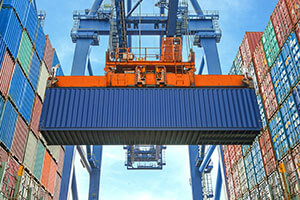Sixty percent of manufacturers use a basic (and flawed) cost model to determine the costs to offshore their product manufacturing needs.[i] They base decisions to do business in other countries on:
- Wage arbitrage – Countries where there is an abundance of labor and the cost of doing business is lower than in the United States.

- Purchase price variance (PPV) – A procurement metric that rewards purchasers who achieve year-over-year cost savings. This happens when a supplier lowers their piece-part price from the year(s) prior.
- Landed cost – The total price of a product or shipment includes the product cost, transportation fees, customs, duties, taxes, tariffs, insurance, currency conversion, crating, handling and payment fees.
In some circumstances, there can be drawbacks when offshoring product manufacturing. Companies may experience cost-savings, but their suppliers may cut corners elsewhere, triggering other areas of product manufacturing to suffer. Product design engineers, and purchasers, and the OEMs they serve, need to know that today’s U.S. manufacturers are in a good position to compete with lower-cost overseas suppliers.
Do Not Get Caught Off Guard
Companies that offshore manufacturing will want to consider 10 areas of doing business that may work against anticipated cost reductions.
- Lead and delivery times: If you experience product quality issues or a recall and quickly need replacement parts, U.S. manufacturers can shorten your lead and delivery times by weeks, or sometimes months. On top of this, shipping charges cost less and in-country manufacturers may be able to offer you just-in-time deliveries.
- Overseas wages: The combination of rising wages plus fluctuations in currency exchanges may require a new quote or price increase.
- Product innovations: When you need to collaborate with overseas suppliers to change product designs, time zone differences and language barriers can add time and complications to your efforts. If you include travel, the cost of doing business overseas adds up even more. Having ease-of-access to domestic suppliers can decrease your time-to-market, thereby increasing your bottom-line value.
- Consistent quality product manufacturing: When you have quality issues and need to return defective product to an overseas supplier, the added shipping costs could decrease your profitability, and make it time-consuming to manage. In many cases, there is no value in returning rejects, as overseas suppliers may not offer product warranties, or have data tracking systems to help manage recalls.
- Tax incentives: If you send your product manufacturing jobs overseas, you need to stay on top of regulatory changes within the U.S. government that can affect your business. When President Trump announced a 10% tariff on all aluminum entering the United States, your product costs just increased. On the bright side, our national and local governments are responding more favorably to companies who move product manufacturing back to the United States. Some local governments may offer tax incentives, or low-cost, low-interest loans on new builds. These potential savings can go to your bottom line and support job creation for our citizens.
- Inventory, quick-turn orders: When you have to wait for your overseas supplier to fill a shipping container to help offset the higher cost of shipping, inventory fees may accrue on waiting product. Rush orders can also be cost-prohibitive, or even, unobtainable.
- Make design changes: If you need to make design changes to your product, language barriers and substantial time-zone differences can occur with international suppliers and directly affect your product manufacturing. Design changes also could require cumbersome, and time-consuming international travel for your team to assist your supplier in making changes.
- A skilled workforce: American manufacturers are stepping up their recruitment and retention game by creating their own in-house training and leadership development programs, while also offering unique retention benefits, such as 100 percent tuition reimbursement benefits beginning on day one of employment. These actions are increasing the skills of our workforce. The demand for these workers will continue to be a driving force in the U.S. manufacturing industry. Do you know what your overseas suppliers are doing to invest in their workforce?
- Creates local jobs: Shifting production from overseas back to the United States creates hundreds and thousands of manufacturing, engineering and high-tech jobs in our own country. This gives us opportunity to grow our skills, increase our industrial and technical knowledge, and be even more creative in our new product innovations.
- Made in the USA: This is more than a nomenclature. For consumers who buy your products, “Made in the USA” signifies quality workmanship, more jobs, and a healthy economy.
Do Not Get Blinded by Price
Like a shiny new object that catches your eye, do not become blinded by a lower piece-part price. Your purchasing managers, buyers, and design engineers, need to be aware of behind-the-scene factors that could increase your product manufacturing costs.
What price do you put on project management, speed to market, or intellectual property? After considering the 10 items above, take time to walk through the resource listed below. Educate yourself about the total cost of ownership to make the best decision for your company. Keep in mind, other than piece-part costs, there are several critical factors to consider when choosing your manufacturing suppliers.
Calculate your true costs using an overseas supplier through this free tool: Total Cost of Ownership Estimator™, recognized as a viable resource by the U.S. Commerce Department.
[i] Reshoring Initiative – a non-profit advocacy group
